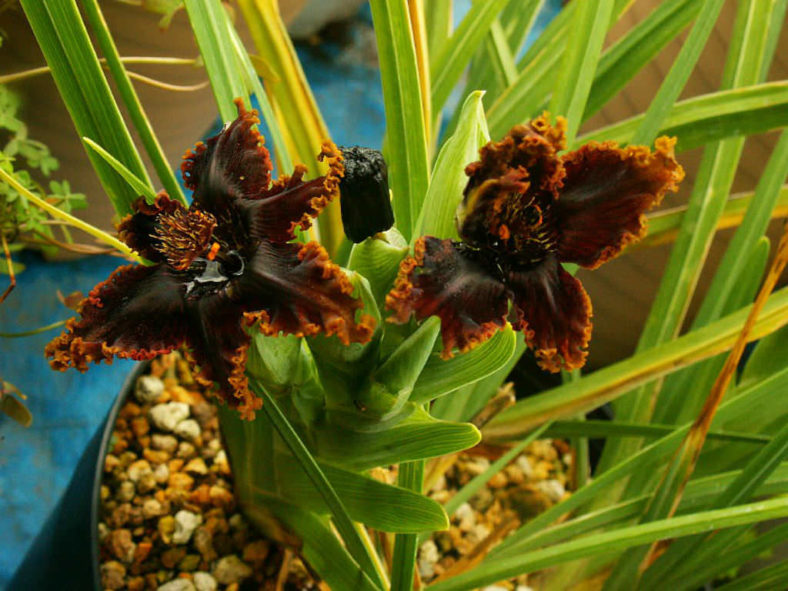The genus Ferraria was named in honor of Giovanni Battista Ferrari, who first described a Ferraria in 1633. Ferrarias were brought to Europe before the middle of the 17th century and cultivated there as items of interest in part due to their unusual flowers.
Growing in spring from underground corms, Ferrarias are primarily grown for their unique and frilly, speckled flowers, which usually range in shades of brown to yellow, violet, and blue or combinations of all of these colors and even green. Ferrarias last a single day, but established plants usually produce a large number.
Ferrarias also have an unusual shape. They are relatively small, and many of the flowers emit an unpleasant aroma reminiscent of rotten meat. However, some spider flowers are sweetly scented, such as F. brevifolia, F. kamiesbergensis, and F. schaeferi.
Ferrarias make lovely additions to the garden, adding a unique charm of their own. The star-like flowers that resemble a starfish have also prompted the nickname Starfish Lily.

Growing Conditions and General Care
Ferrarias are easy bulbs to grow. These plants prefer to be located in the sun or semi-shade in loamy, well-drained soil just beneath the surface (1-2 inches/2.5-5 cm). Plants in too much shade will fail to bloom and eventually die out. The rarer species are generally best grown in pots or containers.
The care of Ferraria corms doesn't require too much, either. Once their spring flowering has completed, the foliage will slowly begin to fade, and the Ferraria flowers go dormant in summer. During this time, all watering should be limited.
Bring any container-grown plants indoors for overwintering and provide a generous amount of mulch for winter protection to those growing outdoors.
Established Ferraria plants will produce large clumps each year. These can be easily divided in the spring when overcrowding becomes a problem or if additional plants are desired elsewhere in the garden.
Source: plantingflowerbulbs.com
Links
- Back to genus Ferraria
- Plantpedia: Browse flowering plants by Scientific Name, Common Name, Genus, Family, USDA Hardiness Zone, or Origin

